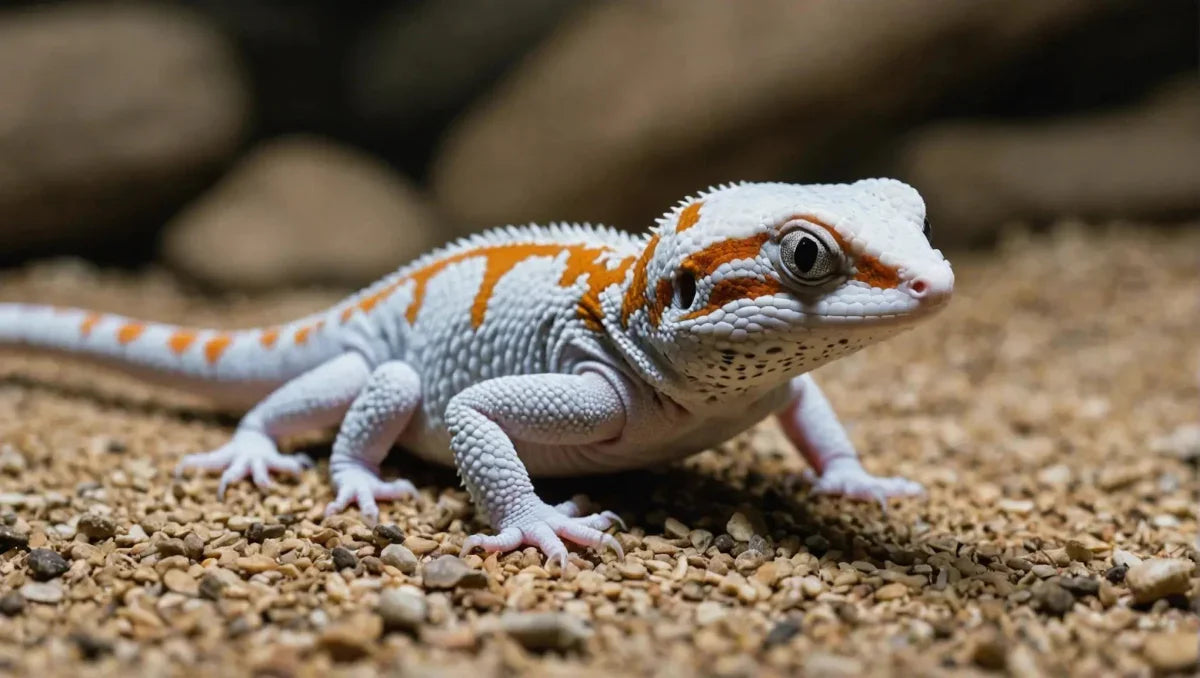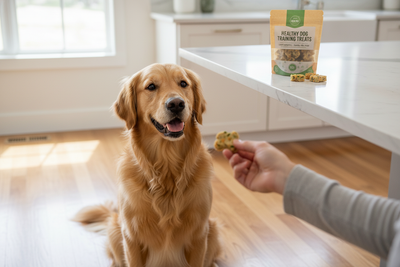Welcome to the Fascinating World of Leopard Geckos!

One crucial aspect of caring for these amazing creatures is understanding their heat requirements. In this guide, we will delve into the specific temperature needs of leopard geckos, shedding light on how crucial heat is for their overall well-being. By maintaining the right temperature in their habitat, you can ensure that your leopard gecko remains healthy, active, and happy. Join us as we explore the ideal temperature range, the importance of heat gradients, and the best heating equipment to create a comfortable environment for your scaly companion.
Whether you are a seasoned reptile enthusiast or a novice pet owner, mastering leopard gecko heat requirements is essential for providing optimal care. Get ready to unlock the secrets of keeping your leopard gecko cozy and content in its home!.
Ideal Temperature Range
Optimal Temperature for Leopard Geckos
Leopard geckos, being ectothermic creatures, rely on external sources of heat to regulate their body temperature. The ideal temperature range for leopard geckos is between 88-92°F (31-33°C) on the warm side and around 70-75°F (21-24°C) on the cooler side of their enclosure. Maintaining this temperature range is crucial for their digestion, metabolism, and overall well-being.
Effects of Incorrect Temperatures
Temperature plays a vital role in the health of leopard geckos. If the temperatures are too high, the gecko may become stressed, stop eating, or even suffer from heat stroke. On the other hand, if the temperatures are too low, it can lead to digestive issues, respiratory infections, and other health problems. It is essential to monitor and adjust the temperatures regularly to ensure the optimal conditions for your pet.
Use of Thermometers and Heating Sources
To maintain the ideal temperature range, it is necessary to use reliable thermometers to monitor the temperatures accurately. Digital thermometers with probes placed at different levels in the enclosure can help you ensure that the heat gradient is appropriate. Additionally, various heating sources such as under-tank heaters, heat mats, ceramic heat emitters, or heat lamps can be used to create the necessary warm spots. It is important to provide a thermal gradient within the enclosure to allow your leopard gecko to regulate its body temperature effectively.
Importance of Temperature Regulation
Proper temperature regulation is not just about comfort; it directly impacts the health and behavior of your leopard gecko. Consistent exposure to incorrect temperatures can weaken their immune system, making them more susceptible to diseases. In the wild, these geckos move between warm and cool areas to maintain their body temperature. By recreating this thermal gradient in captivity, you are promoting their natural behaviors and ensuring their well-being.
Behavioral Cues of Temperature Discomfort
Observing your leopard gecko's behavior can provide valuable insights into their thermal comfort. If your gecko spends excessive time in the cooler area or constantly seeks out the warm side, it may indicate a temperature imbalance in the enclosure. Additionally, lethargy, reduced appetite, or hiding excessively could be signs of temperature-related stress. Monitoring these cues can help you make timely adjustments to create a more suitable environment for your pet.
Seasonal Adjustments and Environmental Factors
Different seasons and environmental conditions can influence the ambient temperature in your gecko's enclosure. During colder months, you may need to increase the heating to maintain the ideal temperature range consistently. Factors like humidity levels and air circulation also play a role in temperature management. Ensure proper ventilation to prevent overheating and consider using a thermostat to regulate heating devices more efficiently.
Consulting a Reptile Veterinarian
If you are unsure about the temperature requirements for your leopard gecko or notice persistent health issues despite maintaining the recommended temperatures, consulting a reptile veterinarian is crucial. A vet specializing in exotic pets can provide tailored advice on setting up the ideal habitat, diagnosing temperature-related illnesses, and offering treatment options. Regular check-ups can help ensure that your gecko's temperature needs are met for its optimal health and longevity.
Maintaining the ideal temperature range is a fundamental aspect of leopard gecko care. By understanding the significance of temperature regulation, using appropriate monitoring tools, and observing your pet's behavior, you can create a safe and comfortable environment that promotes their well-being. Remember that each gecko is unique, so staying attuned to their individual temperature preferences and making necessary adjustments will contribute to a thriving and content leopard gecko companion.
Section: Creating a Proper Heating Setup
Proper heating is crucial for maintaining the health and well-being of your pets, especially for reptiles, amphibians, and other exotic animals that require specific temperature ranges to thrive. In this comprehensive guide, we will delve deeper into creating an optimal heating setup for your habitat to ensure the comfort and health of your beloved pets.
Choosing the Right Heating Elements and Equipment
Choosing the appropriate heating elements is the cornerstone of a successful heating setup. Explore the various types of heating sources available, including heat mats, heat lamps, ceramic heaters, and under-tank heaters. Discuss the pros and cons of each type, considering factors like efficiency, safety, and suitability for different species.
Placement of Heat Sources in the Habitat
The strategic placement of heat sources is essential for establishing a proper temperature gradient within the enclosure. Educate readers on the concept of a temperature gradient and its significance in allowing animals to self-regulate their body temperature effectively. Provide detailed insights into the ideal positioning of heat sources to create a gradient that mimics the natural conditions of the animals' native habitats.
Monitoring and Adjusting Temperatures
Regular monitoring of temperatures is paramount to ensure the well-being of your pets. Offer practical advice on using digital thermometers and thermostats to accurately measure and maintain the prescribed temperature range. Guide readers on interpreting temperature readings and making necessary adjustments to heating equipment to uphold the optimal conditions for their pets.
Implementing Safety Precautions
Emphasize the importance of safety measures when setting up heating elements in the habitat. Discuss essential precautions such as utilizing thermostats to prevent overheating, securing wires to prevent hazards like entanglement or chewing, and placing heat sources out of reach of pets to prevent accidental burns or injuries.
Additional Considerations
Expand on the topic by addressing other crucial factors that contribute to a successful heating setup, such as humidity levels, the role of basking spots, and the influence of substrate choices on heat retention. Provide practical tips on troubleshooting common heating issues and maintaining the equipment for optimal performance.
By adhering to these comprehensive guidelines and gaining a deeper understanding of the principles behind creating a proper heating setup, you can foster a safe, comfortable, and stimulating environment that promotes the well-being and vitality of your exotic pets.
Monitoring and Adjusting Temperature
Importance of Regular Temperature Checks
Regular temperature monitoring is a critical practice in various settings, from homes to commercial spaces and industrial facilities. The significance of regular temperature checks extends beyond ensuring comfort; it is a proactive measure to safeguard the well-being of individuals, preserve the quality of perishable goods, and maintain operational efficiency in numerous industries. By monitoring temperatures consistently, you establish a baseline for normal operation and facilitate early detection of anomalies that could lead to costly consequences if left unaddressed.
Strategies for Effective Temperature Monitoring
Implementing a robust temperature monitoring strategy involves a combination of technological tools and procedural guidelines. Automated systems equipped with sensors and data logging capabilities enable real-time monitoring of temperature variations, allowing for timely responses to deviations. Additionally, establishing clear protocols for data collection, analysis, and response protocols enhances the effectiveness of temperature management practices. Regular calibration of monitoring equipment and periodic reviews of monitoring procedures contribute to the reliability and accuracy of temperature data.
Adjusting Temperatures Responsively
When faced with unexpected temperature fluctuations, quick intervention is key to preventing adverse impacts. Upon detecting deviations, investigate the root cause, which could range from equipment malfunctions to environmental factors or human error. Adjust thermostat settings, HVAC parameters, or environmental controls promptly to restore temperatures to the desired range. Document the incident and the corrective actions taken to facilitate post-event analysis and continuous improvement of temperature management processes.
Seeking Professional Assistance
Persistent temperature irregularities or complex system malfunctions may necessitate the involvement of HVAC professionals or temperature control experts. These specialists possess the knowledge and tools to conduct in-depth assessments, identify underlying issues, and implement targeted solutions to restore optimal temperature conditions. Collaborating with professionals not only resolves immediate concerns but also helps in preventive maintenance planning and system optimization for long-term efficiency.
By prioritizing regular temperature monitoring, implementing effective strategies for data analysis, and responding promptly to deviations, you can create a conducive environment that promotes comfort, enhances productivity, and safeguards temperature-sensitive assets from potential harm.
Seasonal Considerations
Exploring Temperature Variations Throughout the Year
As the seasons change, so do our heating needs. Understanding the temperature variations that occur throughout the year is crucial for maintaining a comfortable and energy-efficient indoor environment. Let's delve into the seasonal considerations that can help you adapt your heating setup effectively.
Temperature Variations Throughout the Year:.
-
Spring: Spring brings a mix of cool mornings and warmer afternoons. It's essential to have a heating system that can easily transition between heating and cooling modes to keep your space comfortable.
-
Summer: While summer is typically associated with warmth, there can still be cooler nights that may require some heating. Having a programmable thermostat can help adjust your heating system based on the fluctuating temperatures.
-
Fall: As fall sets in, temperatures start to drop, signaling the need for more consistent heating. It's a good time to check and maintain your heating system to ensure it's ready for the colder months ahead.
-
Winter: Winter demands the most from your heating system. Proper insulation, regular maintenance, and setting the right temperature can help you stay warm while keeping energy costs in check.
Optimizing Heating Systems for Seasonal Changes:
-
Programmable Thermostats: Invest in a programmable thermostat to set different temperatures for various times of the day, allowing you to conserve energy when heating is less needed.
-
Zone Heating: Consider implementing zone heating to heat specific areas of your home as needed, providing personalized comfort and energy savings.
-
Regular Maintenance: Schedule routine maintenance for your heating system to ensure it operates efficiently throughout the year.
Additional Tips for Efficient Heating:.
-
Insulation Upgrades: Enhance your home's insulation to prevent heat loss during colder seasons, reducing the workload on your heating system.
-
Energy-Efficient Heating Options: Explore energy-efficient heating alternatives such as heat pumps or radiant heating systems to lower energy consumption and reduce utility bills.
-
Air Quality Considerations: Ensure good indoor air quality by changing filters regularly and keeping air vents unobstructed to maintain efficient heating performance.
-
Utilize Natural Heating Strategies: Make use of natural heat sources like sunlight by opening curtains during the day and closing them at night to improve insulation.
By incorporating these additional tips along with understanding temperature variations and optimizing heating systems, you can create a more sustainable, comfortable, and cost-effective indoor environment throughout the year.
Conclusion
Maintaining the appropriate temperature for leopard geckos is crucial for their overall health and well-being. By understanding their temperature requirements and providing the right heat sources, such as heat mats or ceramic heat emitters, leopard gecko owners can ensure that their pets thrive in a comfortable environment. Remember, consistency is key when it comes to temperature regulation, so regularly monitoring and adjusting the heat sources is essential for keeping these fascinating reptiles happy and healthy.






